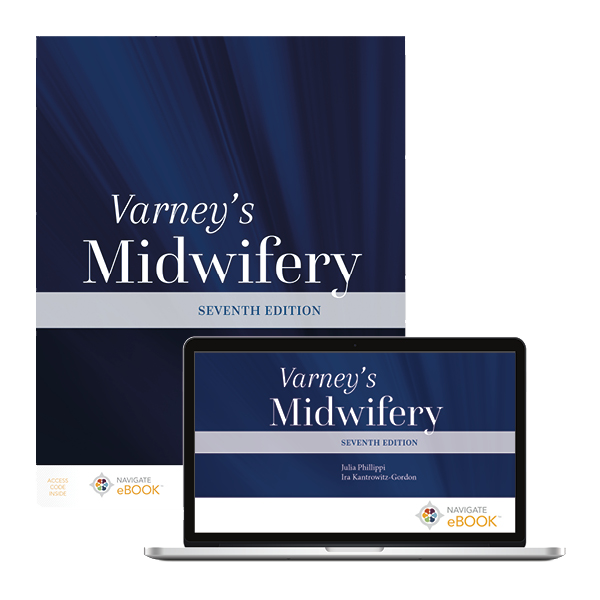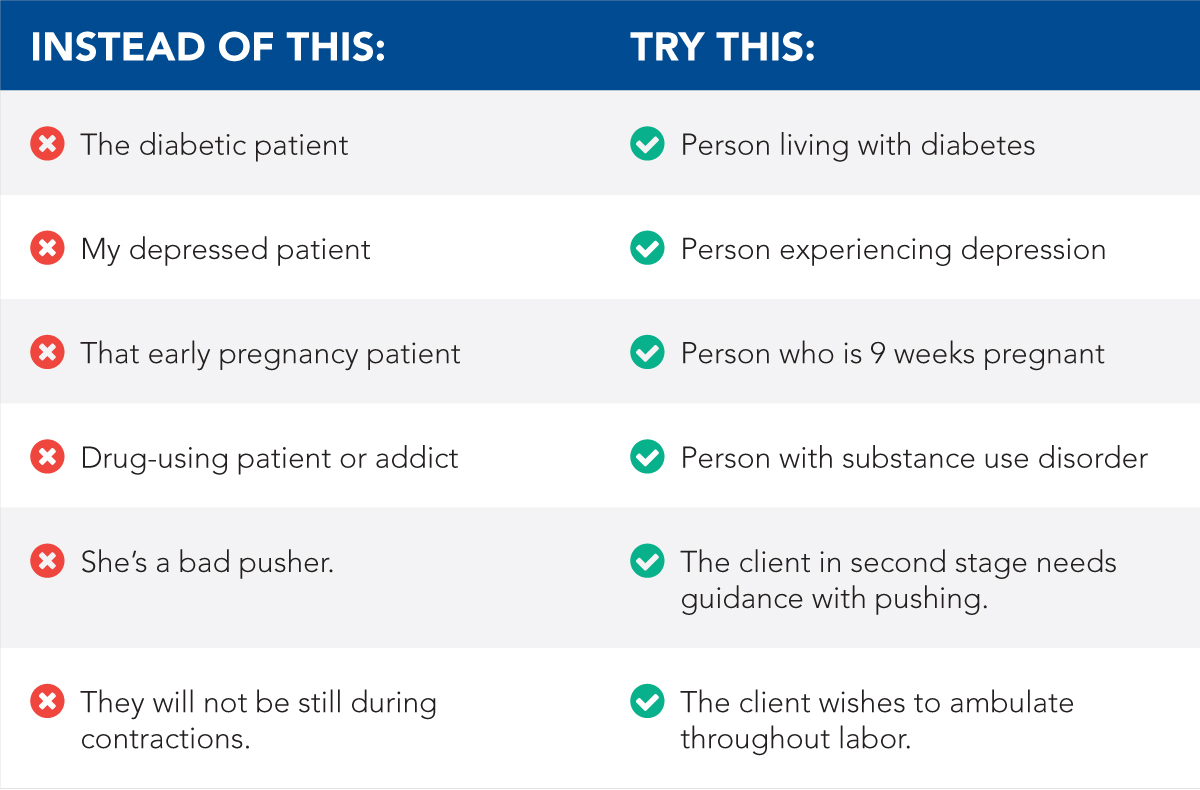Why Midwives’ Words Matter: Teaching Person-First Language

The human body responds favorably to feeling safe. Non-judgement and acceptance can increase the feeling of safety for clients seeking healthcare, and these concepts are cornerstones of the midwifery model of care.
According to the American College of Nurse Midwives, individualizing care is a priority for nurse-midwives, and it is widely recognized that positive and connected health encounters, rather than those that create negativity and judgement for the client, can improve health outcomes. Additionally, creating safe spaces for clients ensures they will be comfortable seeking midwifery care in the future.
It is important for nurse-midwives to remember that we are known and loved for how we treat the individuals and families who come into our care, as well as how we treat their health concerns. Two ways in which midwives demonstrate our commitment to our model of care is in the words we use while giving report on a client’s labor progress and in how we document in their electronic health records.
Read on to learn more about why our words are so important to what we do, and how to teach others tips on the right approach to language.
The Person-First Language Approach in Healthcare
Student nurse-midwives should be exposed to the concept of person-first language by their educators and preceptors, so they might begin their careers with the understanding that the words we use matter to our clients and can even affect their overall health.
Person-first language is a way of communicating about a client in a healthcare setting that recognizes the humanity of the individual before their medical symptoms, diagnoses, and experiences.
In the film Steel Magnolias, the character of Shelby, who is a person living with Diabetes, famously says during a low blood sugar experience, “Don’t talk about me like I’m not here!” The frustration of being objectified during such an intense and vulnerable moment can be experienced in any healthcare encounter and pregnancy is no exception.
From calling a client by their name as they labor and birth their baby into the world to wording progress notes in a professional but not sterile manner, nurse-midwives are putting the human being at the center of their care. To put it simply, being seen as a human instead of an object matters in moments of illness as well as in seasons good health. In fact, person-first language is such a priority to health professions that it is often included in the author’s style guide for medical and nursing journals and textbooks.
Teaching Midwives to Use Person-First Language
Varney’s Midwifery, Seventh Edition is the textbook widely used in nurse-midwifery education programs and is known for person-first language and the promotion of the hallmarks of midwifery, individualization of midwifery care. Whether teaching the components of a visit for the person who is newly pregnant or a step-wise approach to midwifery skills in the updated appendices, the newest version of Varney’s Midwifery demonstrates these concepts well.
Varney's Midwifery, Seventh Edition
Varney's Midwifery uses current evidence-based guidelines to address the care of individuals throughout the lifespan, including primary care, gynecology, maternity care in a variety of settings, and newborn care. The Seventh Edition reflects the new ACNM Core Competencies for Basic Midwifery Practice published in 2020, including care of transgender individuals and abortion-related care.
Request Your Digital Review Copy
To think that so many learning nurse-midwives will be exposed to a person-first manner of speaking as they use the textbook is inspiring.
Nurse-midwifery faculty should also strive to use person-first language as they educate the future of the midwifery profession. For example, describing someone’s health history using person-first language can decrease the bias perceived by the client, as well as deepen the connection and trust during the visit.
Faculty should also consider if other materials such as lectures, presentations, and resources used in midwifery classrooms need to be updated to include person-first Language. We cannot expect student nurse-midwives to use a tool that we do not use and model ourselves!
The following is an example of person-first language and how to incorporate this way of speaking into your educational presentations.

About the Author:
Elizabeth (Liz) Muñoz, DNP, CNM, FACNM (she/her) is an Assistant Professor of Nursing at the University of Alabama at Birmingham School of Nursing (Nurse-Midwifery Pathway). Her research focus is size-friendly midwifery care and bias-informed education for clinicians when discussing client health behaviors. A graduate of Vanderbilt University School of Nursing (MSN ‘13; DNP ‘21), Liz is passionate about the midwifery model of care and increasing access to nurse-midwives to improve outcomes for pregnant people.
Related Content: